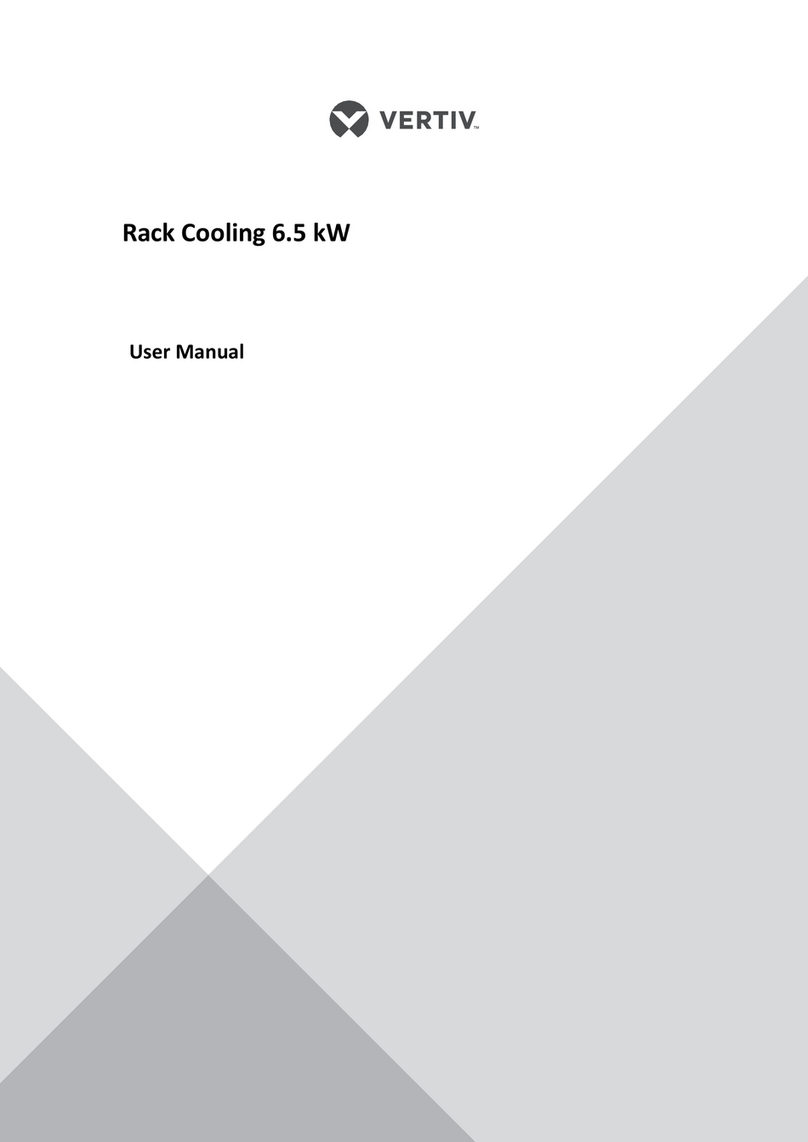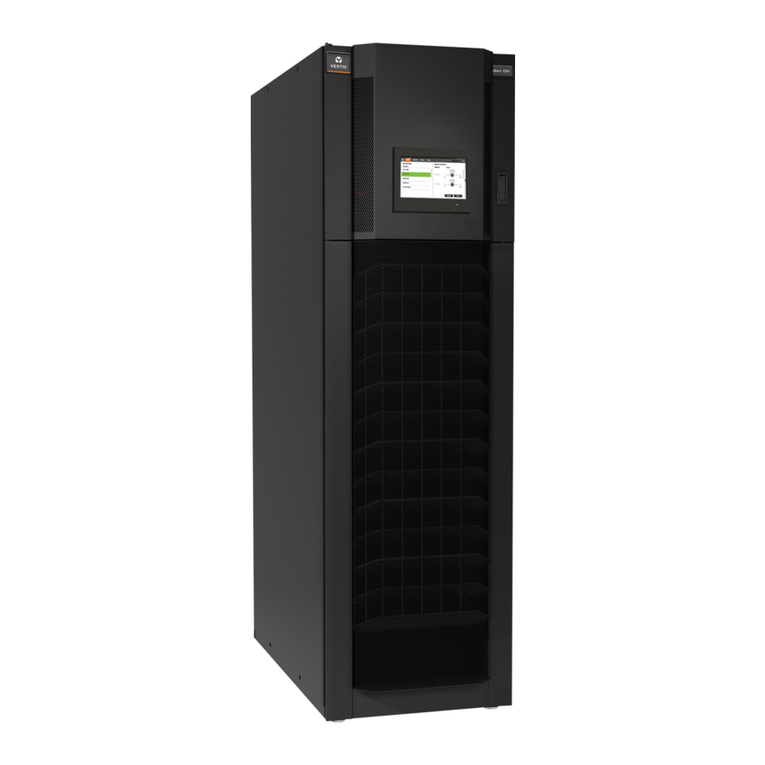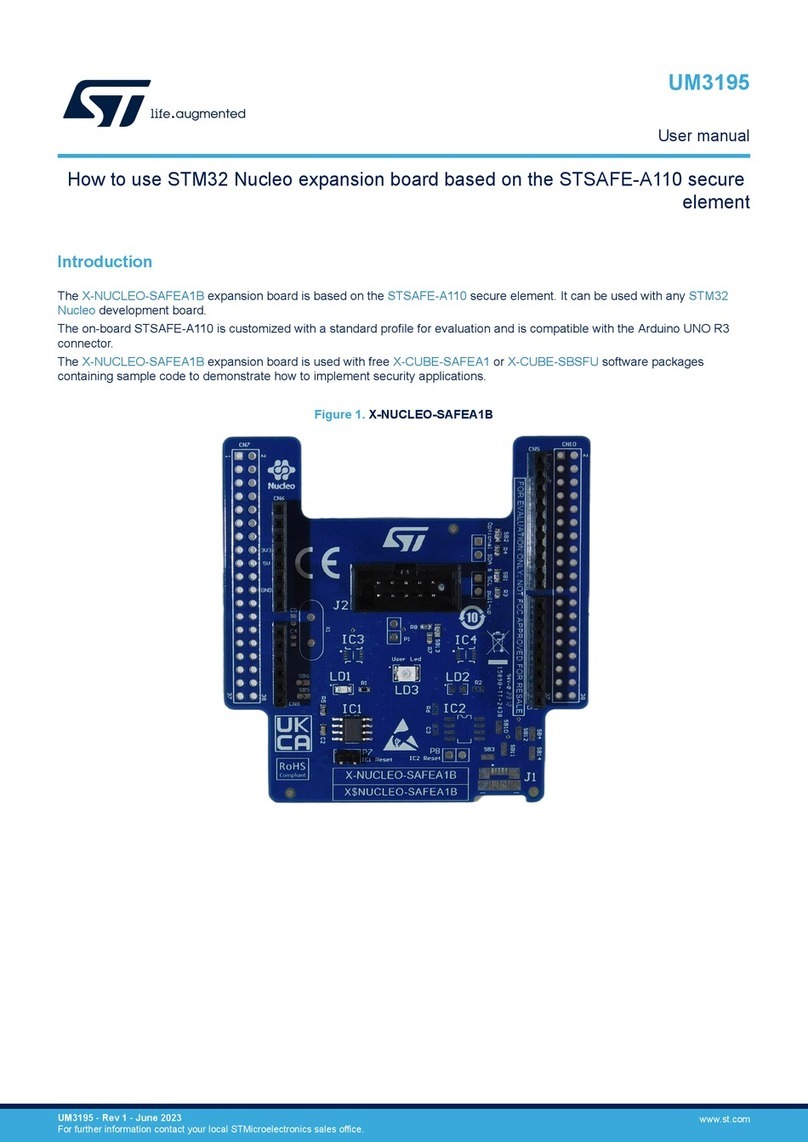
3
Liebert®PDX, EconoPhase Version - UM - 265133 - 29.08.2019
1.3 - Liebert MC™ EconoPhase Version
The Liebert®MC air-cooled microchannel condenser is a low-
prole, direct-drive propeller fan-type air-cooled unit suitable for
mounting outdoors. It provides heat rejection for either one or two
separate refrigeration circuits, matches the heat rejection capacity
corresponding with the outdoor ambient temperature and with each
corresponding compressor heat rejection requirements.
Constructed with an aluminum cabinet, galvanized steel frame
and microchannel coil, the unit is quiet and corrosion resistant.
The condenser is quickly and easily installed because all internal
wiring is completed at the factory with only electrical connections
and communications connections to be made at the job site. All
electrical connections and controls are enclosed in an integral
weatherproof section of the condenser.
The Liebert®EconoPhase pumped refrigerant system will always
use the premium version condenser.
In EconoPhase operation, the premium control board uses
inputs from the indoor unit, condenser refrigerant temperatures
and ambient temperatures to modulate the EC fan motor speed
from 0 to 100% RPM, maintaining the refrigerant temperature
setpoint. The control system provides temperature control for
outdoor ambient as low as -35°C in pumped refrigerant Liebert®
EconoPhase operation.
1.4 - Liebert®EconoPhase Pump Refrigerant Module
The Liebert®EconoPhase is an option for a Liebert®PDX
EconoPhase Version air-cooled system. The Liebert®EconoPhase
allows an air-cooled direct expansion system to switch from vapor
compression operation to pumped refrigerant operation when
the outdoor temperature is low enough to provide the required
temperature dierence between the inside air and the outside air.
Fig. 2 - Liebert EconoPhase module
1.5 Standard Air-Cooled System vs. Liebert®PDX
EconoPhase System
There are dierences between the standard air-cooled system and
a system designed with the Liebert®EconoPhase. The user must
be aware of these dierences to achieve the best operation. This
section summarizes the dierences; more detailed explanations
are found throughout this manual and the manual of Liebert®
EconoPhase Pump Refrigerant Module.
• Liebert EconoPhase Operation - Liebert®EconoPhase
operation is possible when the outdoor temperature is low
enough to provide the required temperature dierence
between the indoor air and the outside air. This mode turns the
compressors O and turns the Liebert®EconoPhase pumps
On.
• Refrigerant Pumping - During Liebert®EconoPhase
operation, the refrigerant is pumped around the air-cooled
loop instead of going through the vapor compression cycle.
System pressures will vary signicantly depending on whether
the system is operating in standard aircooled mode or in
Liebert®EconoPhase operation.
• Energy Savings - The coecient of performance of the
system increases signicantly during the EconoPhase
operation which results in signicant energy savings for the
user.
• EEV - The system uses an electronic expansion valve during
both direct expansion and EconoPhase operation. The EEV
results in energy savings and helps the pump maintain proper
dierential during EconoPhase operation.
• Piping - The condenser piping is larger than what is typically
specied for Liebert®air-cooled Precision Cooling systems.
The pipe sizing still allows oil return to the compressor
and also allows for ecient operation in both modes of
operation. All eld piped lines must be insulated because the
uid temperatures can be well below the dew point during
EconoPhase operation. All outdoor insulation must be UV
rated and rated for outdoor use.
• Unit/Module Communications - A CANbus connection links
the Liebert PDX and the air-cooled condenser to achieve the
most ecient operation as well as the condenser and the
Liebert®EconoPhase module.
1.6 - Operating Modes
Each circuit on a system combining a Liebert®EconoPhase,
Liebert DSE and Liebert MC has six distinct operating modes:
• Idling with compressor and pumps O
• Startup
• Compressor operation
• Compressor-to-pump changeover
• Pump operation
• Pump-to-compressor changeover
A circuit will run most of the time in either compressor or pump
operation mode. These modes both eciently remove heat from
the conditioned space and reject it via the air-cooled condenser.
The ow paths during each mode of operation are detailed in
Figures 3 and 4.
A couple of dierences to note between Compressor Mode and
Liebert®EconoPhase operation:
• The unit does not dehumidify in Liebert®EconoPhase operation.
If dehumidication is desired, Liebert®EconoPhase operation
must be disabled.
• Bubbles may be seen in the site glass in the indoor unit when
the system is in Liebert®EconoPhase operation. This does not
necessarily mean the system is low on charge.





























